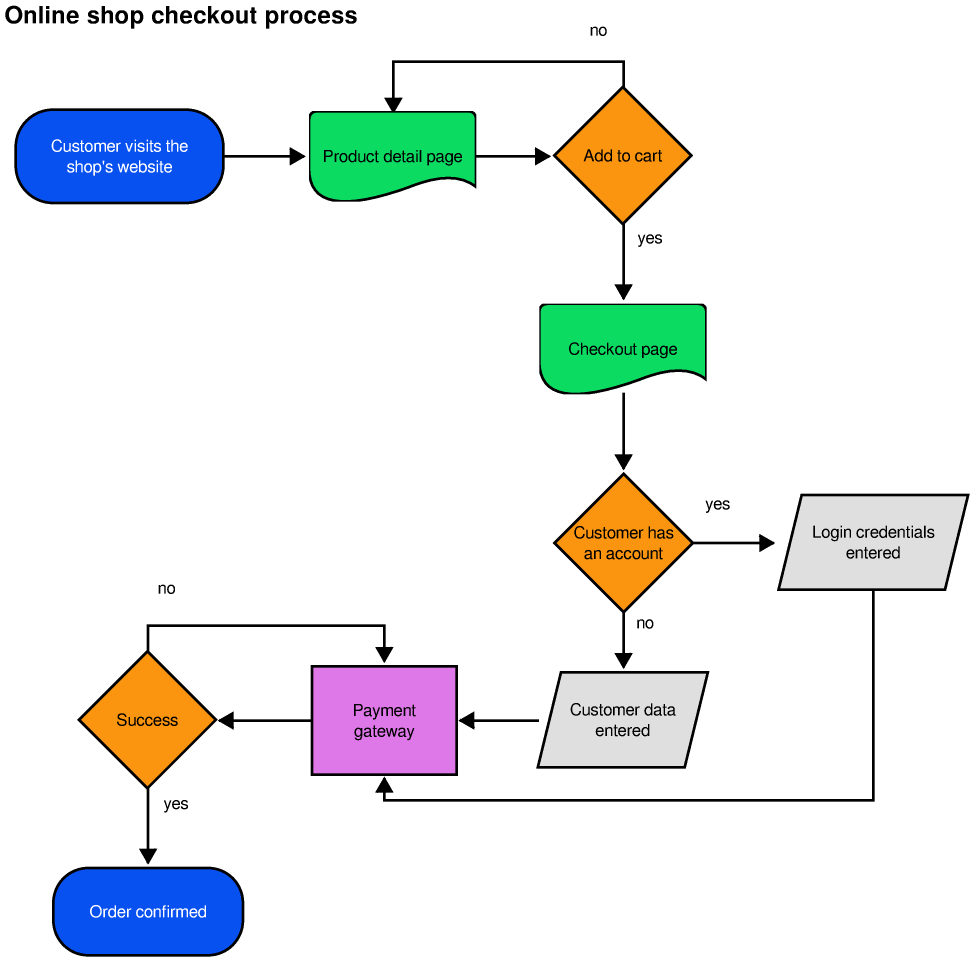A company has an ecommerce checkout workflow that writes – In the world of e-commerce, the checkout workflow is a crucial touchpoint that can make or break a customer’s shopping experience. A company that has an e-commerce checkout workflow that writes has the potential to streamline the process, reduce friction, and increase conversion rates.
This article will delve into the key elements of an effective e-commerce checkout workflow, providing insights and recommendations for businesses looking to optimize this critical stage of the customer journey.
Checkout Workflow Overview
The existing checkout workflow involves a series of steps that customers must complete to purchase products or services. The process begins with the customer adding items to their shopping cart. They then proceed to the checkout page, where they enter their shipping and payment information.
Once the payment is processed, the order is confirmed, and the customer receives a confirmation email.
There are several pain points and areas for improvement in the current checkout workflow. One issue is that the checkout process is too long and complex, which can lead to customers abandoning their carts. Another issue is that the checkout page is not mobile-friendly, which can make it difficult for customers to complete the checkout process on their smartphones or tablets.
Customer Experience Analysis
The customer experience throughout the checkout process is generally positive. However, there are some areas where friction can occur, leading to customers abandoning the checkout process. One area of friction is the checkout page itself. The page is cluttered and confusing, and it can be difficult for customers to find the information they need.
Another area of friction is the payment process. The checkout process requires customers to enter their credit card information, which can be a time-consuming and error-prone process. Additionally, the checkout process does not offer a variety of payment options, which can be a problem for customers who do not have a credit card.
Data Analysis
The checkout data shows that the average checkout time is 5 minutes. The cart abandonment rate is 10%. The most common reason for cart abandonment is that the customer is not satisfied with the checkout process.
Optimization Recommendations: A Company Has An Ecommerce Checkout Workflow That Writes
There are several recommendations that can be made to improve the checkout workflow. One recommendation is to simplify the checkout process by reducing the number of steps that customers must complete. Another recommendation is to make the checkout page more mobile-friendly.
Additionally, the checkout process should offer a variety of payment options, including PayPal, Apple Pay, and Google Pay.
Design Considerations
The checkout page should be designed with the user in mind. The page should be easy to navigate and understand. The checkout process should be as simple and painless as possible. Additionally, the checkout page should be visually appealing and consistent with the rest of the website.
Payment Options
The checkout process should offer a variety of payment options to accommodate the needs of all customers. The most common payment options include credit cards, debit cards, and PayPal. However, the checkout process should also offer alternative payment options, such as Apple Pay, Google Pay, and Amazon Pay.
Security and Compliance
The checkout process must be secure and compliant with all applicable laws and regulations. The checkout process should use SSL encryption to protect customer data. Additionally, the checkout process should comply with the Payment Card Industry Data Security Standard (PCI DSS).
Testing and Iteration
The checkout workflow should be tested and iterated regularly to ensure that it is working properly and meeting the needs of customers. The checkout process should be tested on a variety of devices and browsers. Additionally, the checkout process should be iterated based on customer feedback and data analysis.
Last Recap

By implementing a well-crafted e-commerce checkout workflow that writes, businesses can create a seamless and frictionless shopping experience that delights customers and drives revenue growth.
FAQs
What are the key elements of an effective e-commerce checkout workflow?
An effective e-commerce checkout workflow should be user-friendly, secure, and efficient. It should include clear and concise instructions, multiple payment options, and a secure checkout process.
How can businesses optimize their e-commerce checkout workflow?
Businesses can optimize their e-commerce checkout workflow by analyzing data, identifying pain points, and implementing targeted improvements. This may include reducing the number of steps in the checkout process, offering express checkout options, and providing clear error messages.
What are the benefits of using a checkout workflow that writes?
A checkout workflow that writes can help businesses improve the customer experience, reduce cart abandonment rates, and increase conversion rates. It can also help businesses save time and money by automating the checkout process.